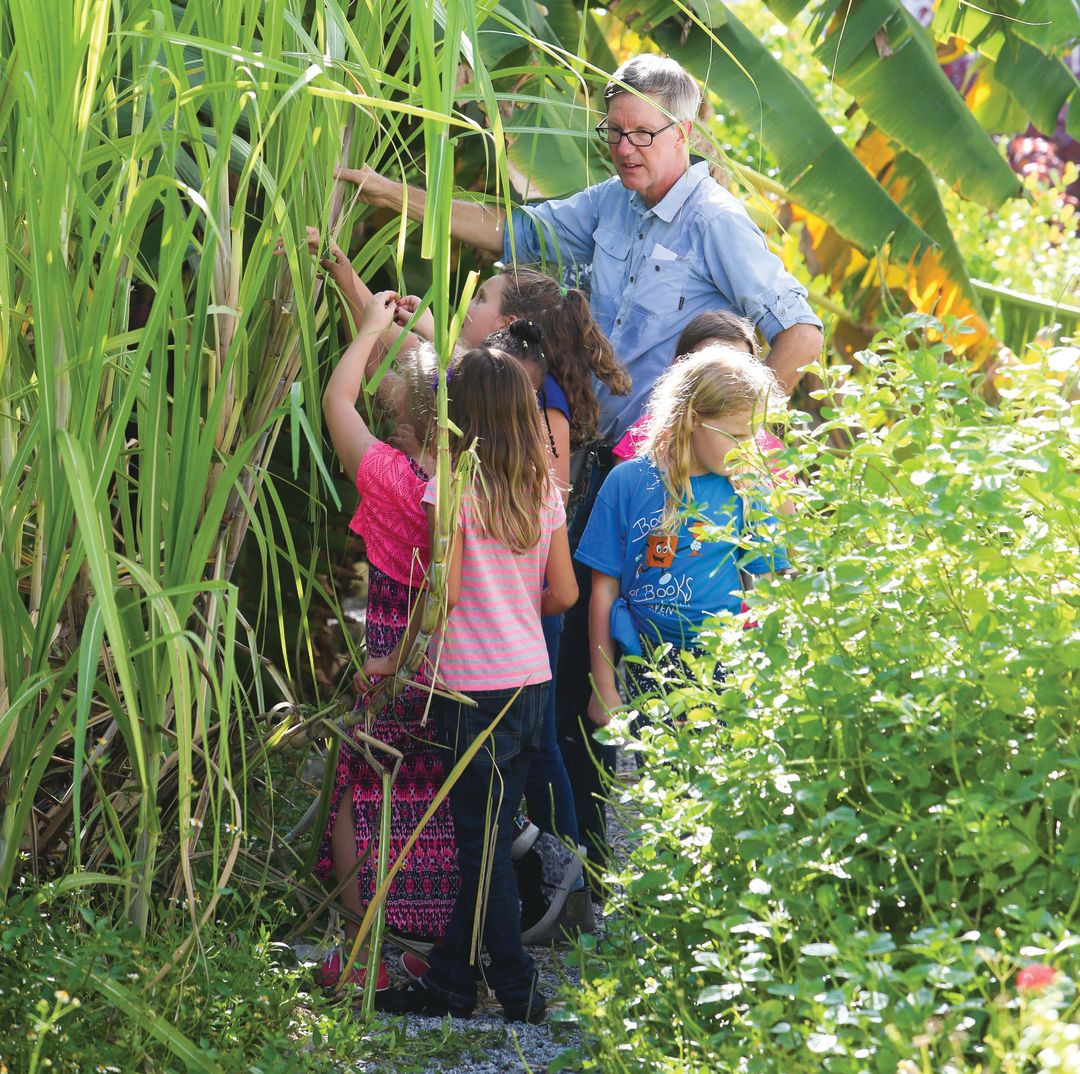Rolf Hanson Starts Sarasota County Schools' First Sustainable Food Forest

Science teacher Rolf Hanson and students amid their tropical growth.
Image: Chad Spencer
Reading, writing, arithmetic—and bananas, papayas and sugar cane, too. Thanks to science teacher Rolf Hanson and the sustainable food forest he’s spearheaded, kids at Bay Haven School of Basics Plus have added planting tropical fruit trees and crops—and eating the results—to their classroom experience.
The idea is to teach students about food production, ecosystem patterns, plant life and soil composition, all while getting them outside. The food forest lets Hanson’s students explore and work in a miniature jungle.
“Every day kids walk through there,” Hanson says. “They’ll bring their parents in the morning or after school. It’s a magical space for them.”
The food forest differs from a normal garden because the plants produce fruit every year without needing much human labor. Hanson used the principles of permaculture, or self-sustaining food production systems. Because the food forest requires such minimal work, Hanson can maintain it and still teach classroom science.
A quick walk through the forest reveals a wide variety of plants and trees. The lineup includes a peach tree, a papaya tree, banana trees, a mulberry tree, a moringa tree, an avocado tree and a fig tree, just to name a few. One plant produces a berry known as the miracle fruit, which causes sour foods to taste sweet.
Bay Haven’s food forest is situated on a half-acre space between two school buildings. The plot used to be a stormwater runoff area. In 2014, a small committee that included Hanson, teachers, administrators, employees, parents and community members planned for months before breaking ground. Before summer vacation, Hanson rototilled the grass and planted cover crops over the area, which served as a natural compost.
The cover crops grew over the summer, and in September, more than 70 volunteers worked for hours on a Saturday to cut the cover crop and lay down 60 yards of donated woodchip mulch.
Then they planted various plants and trees.
Just three years later, a miniature jungle has risen in the schoolyard. Exotic trees bearing ripe fruits reach high overhead, and thick bushes line a mulch walkway through the forest. Shovels, trowels, work gloves, plastic pots, wheelbarrows and a compost tumbler sit along one edge of the jungle. These are the tools of the garden club, about 10 students who help Hanson every week.
Hanson takes his students into the food forest every few months. Permaculture teaches students about scientific fields like plant biology, ecology and soil. It also teaches them about ethics. The three core principles of permaculture are care for the earth, care for people and fair share. When a group of students picked all the ripe mulberries from a tree last year, leaving none for the others, they got a real-life lesson in fair share.
“The kids really get it,” Hanson says. “They all said, ‘Yeah, that wouldn’t be right if I didn’t get to have any [mulberries].’”



